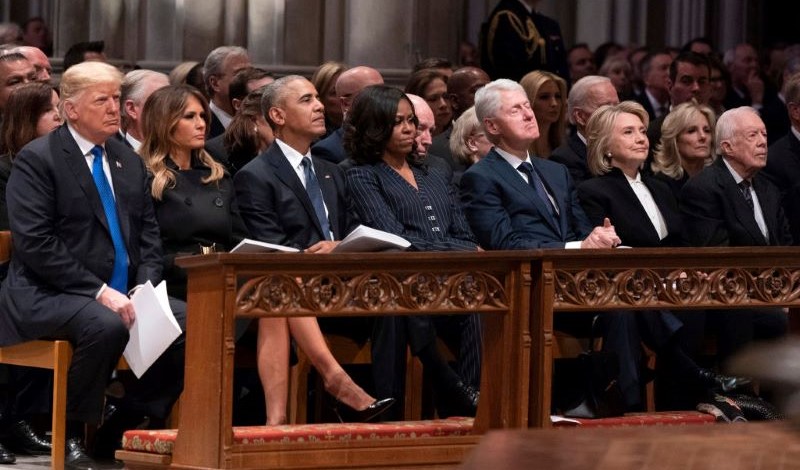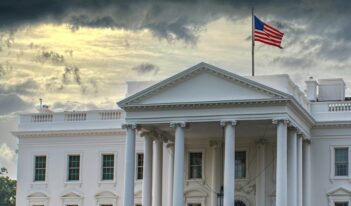
Presidents have played an important and sometimes surprising role in driving regulatory changes.
Spanish philosopher George Santayana once wrote that “those who cannot remember the past are condemned to repeat it.” As the second Trump presidency gets off to a turbulent start, it has already been the target of stinging rebukes by federal judges appointed by Presidents from both parties. I cannot help but wonder whether President Donald J. Trump’s team has fully absorbed the lessons learned from previous presidential administrations. A small yet important audience for my book, Regulatory Reform from Nixon to Biden, is future presidential transition teams that are eager to learn from the successes and failures of their predecessors.
The book begins with the Nixon Administration in the late 1960s because this period gave rise to the new “social” regulations that contributed to a vast expansion of the administrative state. The U.S. Congress directed regulators to protect civil rights, advance the interests of workers in labor-management relations, help consumers navigate a complex marketplace where there are plenty of charlatans, and promote public health, safety and environmental quality. As students are a major audience for the book, I seek to cultivate their appreciation of the diversity and complexity of social regulation. The book invites them to consider which social regulations have been good for our country, such as those setting standards for clean air and water, protecting fisheries and endangered species, and requiring automobile crash protection, and which may be more questionable, such as those setting the national maximum 55 mile-per-hour speed limit on interstate highways and detailing the specifications of toilet-seat design in workplaces.
Many students at Indiana University who helped me refine the manuscript were stunned to read about President Richard M. Nixon and regulatory reform. They knew President Nixon primarily as a disgraced President who resigned from office rather than as “the last liberal Republican” to occupy the White House. Indeed, President Nixon helped give birth to some of our most important social regulatory programs, such as the Clean Air Act, and agencies, such as the U.S. Environmental Protection Agency. My students knew even less about the durable institutional innovations that President Nixon engineered to facilitate White House oversight of regulators. Most notable was his creation of the Office of Management and Budget (OMB), which now oversees almost every major activity of departments and executive agencies, from congressional testimony by cabinet secretaries to rulemaking actions. Subsequent presidents of both parties have relied heavily on OMB in both formulating policy and managing the executive branch. But President Nixon also blundered on regulation—for example, his economy-wide wage and price controls and his coercive ignition-interlock system mandate, which forced motorists to wear safety belts—have not stood the test of time.
The other surprises for my students were the pivotal roles that Democratic Presidents, especially Presidents Jimmy Carter, Bill Clinton, and Barack Obama, played in deregulating entire sectors of the economy. Just as surprising was the pivotal role that Republican Presidents, especially Presidents Nixon, Ronald Reagan, George H.W. Bush, and George W. Bush, played in expanding federal regulatory authority. President Nixon and all nine of his successors sought—though in different ways and with various degrees of long-term success—to improve how regulatory and deregulatory actions were made by the executive branch. They each learned that bureaucracies are devilishly difficult to control.
Although some scholars use the term “regulatory reform” to cover only changes in the process of rulemaking, this book uses a broader definition that includes changes to the substance of regulatory policy, regulatory legislation, and rulemaking. My students appreciated the broader definition, as they were more easily stimulated by debates over how pollution should be prevented and how women’s participation in sports should be advanced than they are by arcane debates about procedures of rulemaking and adjudication under the Administrative Procedure Act. However, once students appreciated the real-world ramifications of administrative competence in regulation and deregulation, they were more receptive to learning about crucial issues in administrative law such as the recent judicial shift away from Chevron deference to agency interpretations of ambiguous statutes.
When teaching students of economics and business, I make clear that virtually every aspect of running a business is now scrutinized by regulators. This concept does not mean that the United States is a socialistic country. On the contrary, it is precisely because we appreciate the virtues of capitalism and want to retain it that we have created regulatory systems that address—sometimes clumsily—capitalism’s downsides. I also emphasize how microeconomic tools and reasoning have come to play an influential role in deciding when regulation is appropriate, which instruments are most economically efficient, and how to evaluate a regulation after it has been adopted and implemented. And I alert students to the growing foothold of “law and economics” in the curriculum of American law schools, which helps explain the increasing judicial respect for benefit-cost approaches to thinking about regulatory quality. Yes, the United States believes in regulation, but it also believes that we need to “regulate the regulators,” an enormous task shared by OMB, Congress, and the judiciary.
In the book’s first chapter, I affirm my belief in presidentialism as a defining feature of American governance, even as a I recognize that the framers of the U.S. Constitution feared—and did not endorse—a dominant President in domestic affairs. I am also aware that some of our Presidents have been energetic, competent, and wise while others exhibited severe flaws in character that undermined their competence. Presidentialism does not mean that Presidents are entitled to do whatever they wish, and the book supplies ample evidence that our system’s checks and balances remain vibrant.
One of the intriguing findings of the book is that Presidents have played a powerful role in the process of making regulatory legislation. They are powerful in setting agendas for Congress and in providing principles and model legislation for Congress to consider. They also use their political resources and veto threat to get what they want—such as President George H.W. Bush when securing the passage of the Clean Air Act, President Clinton when regulating telecommunications, President George W. Bush when advocating the No Child Left Behind Act and President Obama when securing passage of the Patient Protection and Affordable Care Act. Indeed, my view is that our system works best when the President is the primary source of energetic leadership on legislative matters and Congress and the judiciary act as robust checks on—and refiners of—White House legislative initiatives.
This view is of course at odds with the dominant theory in political science—and the view of the framers—that Congress controls the lawmaking process. In modern times, however, Congress is too caught up in partisan polarization to lead consistently on complex regulatory matters. Compared to the President, Congress has been relatively ill for several decades—often it cannot even pass a budget. The federal judiciary—though uniquely powerful compared to its counterparts in other Western democracies—remains a reactive institution and does not have the democratic legitimacy or scientific competence to lead on regulatory policy. It is therefore my hope that the empirical content of the book—the portraits of the ten Presidents and their activism in lawmaking as well as rulemaking—will be of interest to scholars of presidential studies and constitutional law, especially those concerned about the proper balance of power among the three branches of government and the appropriate place of the administrative state in American governance.
I conclude this introduction by confessing, with hindsight, that the book does not address some important issues as thoroughly as might be warranted. Three topics deserve more rigorous attention.
First, our system plays a wasteful game of ping pong when a President from the far end of one political party is succeeded by a President from the far end of the other political party. Regulations are adopted, rescinded, and readopted without sufficient time to assess their value. The transitions from President Obama to President Trump and President Trump to President Joseph R. Biden generated more oscillation than the transitions from President Gerald Ford to President Carter and President Bush to President Clinton, perhaps because Presidents Ford and Carter were more centrist than recent Presidents, at least on many issues. Part of the explanation may be the recent bout of one-term Presidents, which may not occur as often in the future, but I only scratch the surface of this pernicious phenomenon in the final chapter.
Second, I do not take up the important question of regulatory enforcement and compliance. It deserves more attention in future works of this sort, including the potentially perverse role of the President in using the enforcement power for personal or partisan gain.
Finally, the craft of regulatory analysis is better at capturing the impacts of regulation on the public than at shedding light on how the most vulnerable citizens in our society are impacted by regulatory alternatives. President Biden should be applauded for directing OMB’s Office of Information and Regulatory Affairs to work on questions about the distributional consequences of regulation. Although I do not believe that President Biden’s particular approach to equity analysis will garner broad consensus—indeed, it has already been withdrawn by President Trump—I believe that future administrations may be able to advance the cause of equity by calculating the impacts of regulation on low-income populations in addition to society at large. Regulators would then be in an informed position to balance economic efficiency and equity in regulatory decision-making.
I look forward to reading the critiques of Regulatory Reform from Nixon to Biden and learning from their perspectives. And I thank the scholars who volunteered to engage with this work and offer their insights and critiques.




